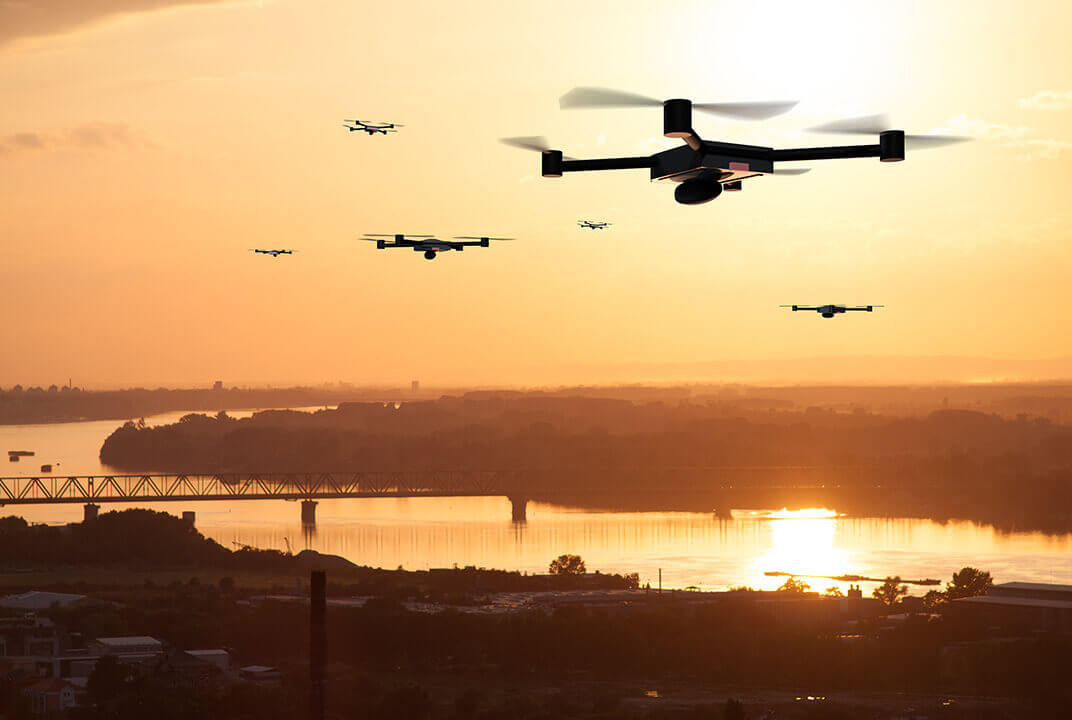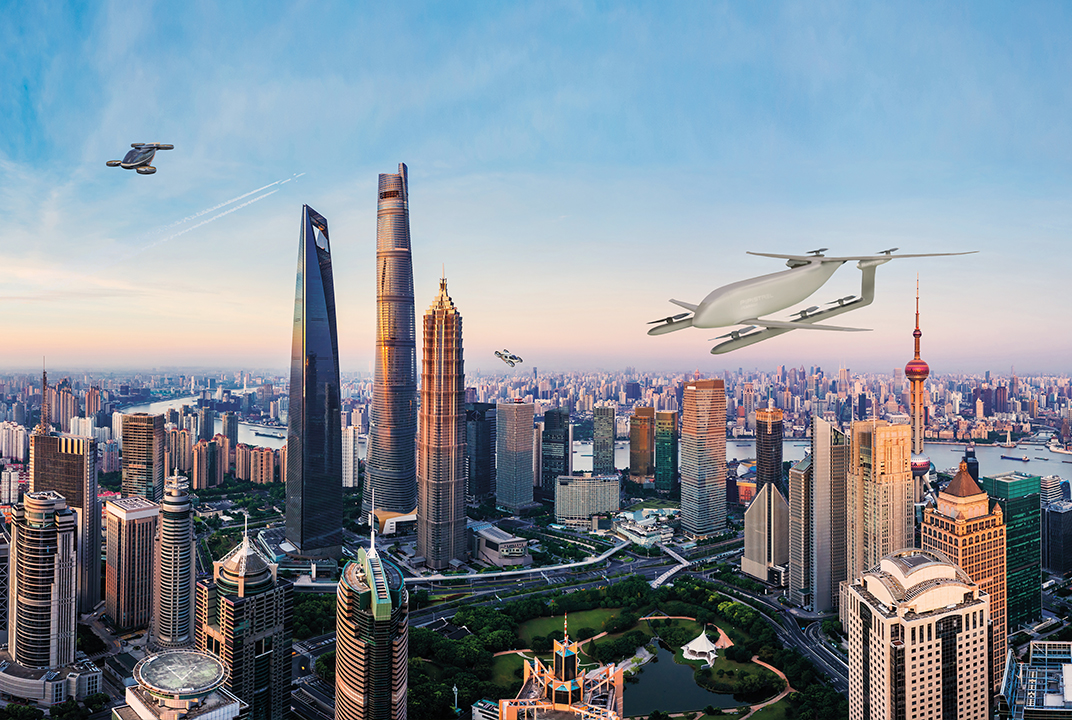Insight | Inmarsat a critical catalyst for commercial UAV growth
Inmarsat a critical catalyst for commercial UAV growth
Aviation
How 30 years of market-leading expertise in aviation communication, navigation and surveillance makes Inmarsat the ideal fit for the growing unmanned aircraft systems industry
These are exciting times for the unmanned aircraft systems (UAS) industry. Forecasts suggest the next decade will see exponential growth in commercial Unmanned Aerial Vehicles (UAVs) – more commonly known as drones – and subsequently the entire ecosystem that ensures the safety of airspace for manned and unmanned vehicles.
Business Insider Intelligence states that UAV market size is expected to reach $63.6bn by 2025 (up from $4.4bn in 2018). This impressive outlook is fuelled by the growing number of vehicles expected in the sector. At present there are 1.1 million UAVs flying and this is predicted to rise to 10 million by 2027 – a tenfold increase, according to the Teal Group’s World Civil Unmanned Aerial Systems 2019 Market Profile & Forecast.
Inmarsat is uniquely positioned to act as a catalyst for the safe and rapid growth of the commercial UAS industry, thanks to its world-leading heritage in global communications and state-of-the-art satellite networks, built for mobility.
An important advantage comes from our market-leading expertise in the communication, navigation and surveillance (CNS) fields – in other words, keeping flying things apart and making sure their locations are known all over the globe – which is further augmented by our UAV experience with civil and military governments. This unique expertise lends itself perfectly to integration with Unmanned Traffic Management (UTM) – akin to Air Traffic Management (ATM) for aircraft. Inmarsat’s military-grade cybersecurity and robust L-band network with its committed investment roadmap combine to make the best solution to connect unmanned aerial vehicles.
Unlocking the potential of the market
Anthony Spouncer, Inmarsat Aviation’s Senior Director of UAVs & Unmanned Traffic Management, says the potential of the UAS sector is immense. “The safety and control of the UAS airspace is absolutely key to unlocking the opportunity of this market on a commercial scale,” he explains.
And this is where the burgeoning UTM market comes into its own. Inmarsat has joined forces with one of the leading UTM technology providers, Altitude Angel, to develop and deliver advanced flight tracking and management capability for UAVs. This collaboration is a first with a UTM provider and it complements Inmarsat’s long-standing relationships with ATM providers worldwide.
Playing to strengths
Within UAV operations, Inmarsat will specialise in beyond-visual-line-of-sight (BVLOS) flight capabilities. Currently, all UAVs have to be visible to the pilot. This one-pilot-to-one-UAV model has restrictions and reduces economies of scale. Playing to Inmarsat’s strengths, BVLOS allows one pilot to operate multiple UAVs remotely at scale, making UAV operations more commercially viable.
Spouncer also notes there’s a clear need for smaller, lighter, less expensive comms equipment that require less power. This will enable cost-effective BVLOS satcom on smaller UAVs for enhanced operational capabilities. Cobham offers the lightweight AVIATOR UAV 200 using Inmarsat satcom to power UAVs beyond line of sight.
Likewise, Honeywell is poised to launch its smallest and lightest satellite communications system yet, designed specifically for unmanned aerial vehicles.
A powerful business tool
One use case would be satisfying maritime regulators’ need to survey remote automated lighthouses and channel marker buoys after a severe storm. These inspections include verifying that channel marker buoys haven’t drifted, and that the lighthouses work, ensuring safe passage for maritime vehicles.
“All of a sudden it goes from UAVs being industrial toys to a powerful business tool,” says Spouncer. “That’s several crews and ships the Coast Guard doesn’t have to manage to complete the same amount of work.”
The commercial UAV sectors poised for major growth include delivery and cargo, surveillance/inspection and urban transport. Industries like medical supplies, healthcare, agriculture, and infrastructure inspection stand to benefit from the expansion of this innovative technology.
COVID-19 and environmental concerns are also accelerating societal and technological acceptance of the power of UAVs. Whether it is delivery of PPE, blood samples or essential supplies to isolated communities, people have become accustomed to cleaner air and hearing the birds sing. UAVs with a 100kg delivery payload and 1000 kilometre range are now operational.
A transformative era
What has been delaying the exponential growth of this sector is the lack of a comprehensive framework regulating safety and control of the UAS airspace. “It isn’t the reliability of the airframe holding things back. It’s the lack of consistent regulation for UAV segregation, identification and security. Getting these right is absolutely key to unlocking the potential for this market on a commercial scale, and Inmarsat is perfectly suited to address these issues,” says Spouncer.
“We have very strong relationships with regulators all over the world because of our existing aviation business. And we fully expect to be able to leverage those to help guide and inform regulations because of what we’ve done in aviation over the last 30 years keeping aircraft safe.”
Spouncer is convinced that the next decade will prove transformative for the UAS sector. He believes fleets of Amazon and UPS/FedEx UAVs delivering from hub to hub is on the horizon.
Inmarsat is in a unique position of being the catalyst for the safe and rapid growth of this industry. With the ability to support global regulators, integrate with UTMs and Air Navigation Service Providers (ANSPs), Inmarsat brings value well beyond the satcom datalink to the UAS ecosystem.


